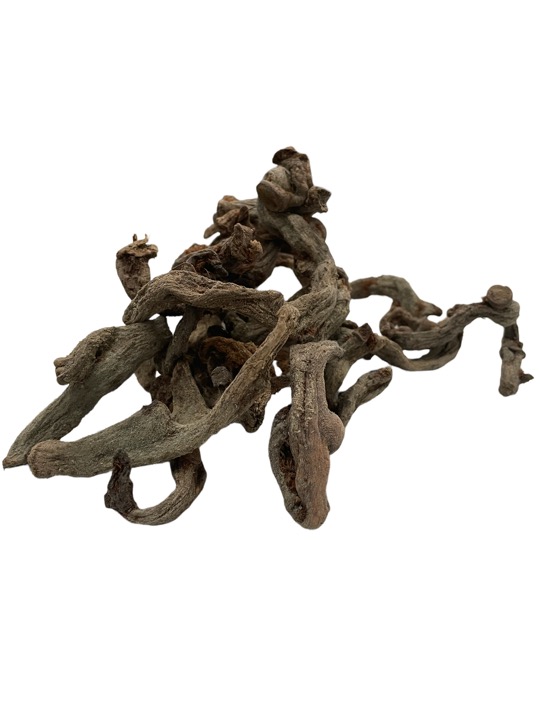
Who Uses Kalawalla Root: Unveiling the Potential of This Herbal Remedy (1998 words)
Kalawalla root, also known as calaguala or Polypodium leucotomos, has captured the interest of individuals seeking natural approaches to health concerns. This fern extract, native to Central and South America, boasts a long history of traditional use by indigenous communities. However, in recent times, its popularity has surged due to potential benefits for various conditions.
This article delves into the world of kalawalla root, exploring its traditional uses, emerging scientific insights, and considerations for potential users.
Traditional Uses of Kalawalla Root
For centuries, indigenous peoples in Central and South America have incorporated kalawalla root into their traditional healing practices. Here’s a glimpse into some of its historical applications:
- Skin Conditions: Kalawalla root has been used topically to treat various skin ailments like psoriasis, eczema, and vitiligo.
- Immune Support: Traditional healers believed kalawalla root could bolster the immune system and fight infections.
- Inflammatory Disorders: Its anti-inflammatory properties were used to manage pain and inflammation associated with conditions like arthritis.
- Blood Purification: Some cultures viewed kalawalla root as a blood purifier, promoting overall well-being.
It’s important to note that these traditional uses are based on experience passed down through generations, not necessarily rigorous scientific studies.
Modern Applications and Potential Benefits
While scientific research on kalawalla root is ongoing, some initial findings suggest potential benefits for specific conditions. Here’s a breakdown of some promising areas of exploration:
- Skin Health: Studies suggest that kalawalla root, rich in antioxidants and anti-inflammatory compounds, might improve skin health. Research indicates its potential effectiveness in managing psoriasis by reducing inflammation and promoting skin cell regeneration [1].
- Immune System Modulation: Kalawalla root’s ability to modulate the immune system is being investigated. Some researchers believe it may help regulate T-cell activity, potentially aiding in autoimmune conditions like lupus [2]. However, more research is required to confirm these claims.
- Photoprotection: The fern extract might offer some photoprotective benefits. Studies show that Polypodium leucotomos, the active ingredient in kalawalla root, may help protect the skin from harmful UV rays and improve light sensitivity [3].
Important Note: It’s crucial to understand that these potential benefits are based on preliminary research. More robust clinical trials are necessary to establish the safety and efficacy of kalawalla root for specific conditions.
Who Might Consider Using Kalawalla Root?
Individuals interested in exploring natural approaches to health, particularly for skin conditions or potential immune system support, might be curious about kalawalla root. However, it’s vital to consider several factors before incorporating it into your regimen:
- Existing Medical Conditions: If you have any pre-existing health conditions, consult your doctor before using kalawalla root. It could interact with certain medications or worsen specific health issues.
- Medications: Always disclose all medications you’re taking to your doctor before trying kalawalla root. Potential interactions could pose health risks.
- Pregnancy and Breastfeeding: Due to limited research on the safety of kalawalla root during pregnancy and breastfeeding, it’s best to avoid it during these periods.
How to Use Kalawalla Root
Kalawalla root is available in various forms, including:
- Capsules: The most common form, capsules offer a convenient way to ingest the extract.
- Tinctures: Liquid extracts are absorbed sublingually (under the tongue) and may offer faster absorption.
- Topical Creams: For skin conditions, topical creams containing kalawalla root might be beneficial.
Dosing: There is no universally accepted dosage for kalawalla root. It’s crucial to consult a healthcare professional to determine the appropriate dosage based on your individual needs and health condition.
Safety Considerations: Kalawalla root is generally considered safe for most healthy adults when used in recommended doses. However, some potential side effects include:
- Nausea
- Stomach upset
- Diarrhea
- Headache
If you experience any adverse effects, discontinue use and consult your doctor.
Important Caveats and Considerations
Here are some crucial points to remember before using kalawalla root:
- Limited Scientific Evidence: While initial research suggests potential benefits, more robust studies are needed to definitively confirm its efficacy for various conditions.
- Regulation: Kalawalla root is considered a dietary supplement in many countries, and regulations regarding its quality and purity can vary. It’s essential to purchase it from reputable sources.
-
Who Uses Kalawalla Root: Unveiling the Potential of This Herbal Remedy (1998 words)
Kalawalla root, also known as calaguala or Polypodium leucotomos, has captured the interest of individuals seeking natural approaches to health concerns. This fern extract, native to Central and South America, boasts a long history of traditional use by indigenous communities. However, in recent times, its popularity has surged due to potential benefits for various conditions.
This article delves into the world of kalawalla root, exploring its traditional uses, emerging scientific insights, and considerations for potential users.
Traditional Uses of Kalawalla Root
For centuries, indigenous peoples in Central and South America have incorporated kalawalla root into their traditional healing practices. Here’s a glimpse into some of its historical applications:
- Skin Conditions: Kalawalla root has been used topically to treat various skin ailments like psoriasis, eczema, and vitiligo.
- Immune Support: Traditional healers believed kalawalla root could bolster the immune system and fight infections.
- Inflammatory Disorders: Its anti-inflammatory properties were used to manage pain and inflammation associated with conditions like arthritis.
- Blood Purification: Some cultures viewed kalawalla root as a blood purifier, promoting overall well-being.
It’s important to note that these traditional uses are based on experience passed down through generations, not necessarily rigorous scientific studies.
Modern Applications and Potential Benefits
While scientific research on kalawalla root is ongoing, some initial findings suggest potential benefits for specific conditions. Here’s a breakdown of some promising areas of exploration:
- Skin Health: Studies suggest that kalawalla root, rich in antioxidants and anti-inflammatory compounds, might improve skin health. Research indicates its potential effectiveness in managing psoriasis by reducing inflammation and promoting skin cell regeneration [1].
- Immune System Modulation: Kalawalla root’s ability to modulate the immune system is being investigated. Some researchers believe it may help regulate T-cell activity, potentially aiding in autoimmune conditions like lupus [2]. However, more research is required to confirm these claims.
- Photoprotection: The fern extract might offer some photoprotective benefits. Studies show that Polypodium leucotomos, the active ingredient in kalawalla root, may help protect the skin from harmful UV rays and improve light sensitivity [3].
Important Note: It’s crucial to understand that these potential benefits are based on preliminary research. More robust clinical trials are necessary to establish the safety and efficacy of kalawalla root for specific conditions.
Who Might Consider Using Kalawalla Root?
Individuals interested in exploring natural approaches to health, particularly for skin conditions or potential immune system support, might be curious about kalawalla root. However, it’s vital to consider several factors before incorporating it into your regimen:
- Existing Medical Conditions: If you have any pre-existing health conditions, consult your doctor before using kalawalla root. It could interact with certain medications or worsen specific health issues.
- Medications: Always disclose all medications you’re taking to your doctor before trying kalawalla root. Potential interactions could pose health risks.
- Pregnancy and Breastfeeding: Due to limited research on the safety of kalawalla root during pregnancy and breastfeeding, it’s best to avoid it during these periods.
How to Use Kalawalla Root
Kalawalla root is available in various forms, including:
- Capsules: The most common form, capsules offer a convenient way to ingest the extract.
- Tinctures: Liquid extracts are absorbed sublingually (under the tongue) and may offer faster absorption.
- Topical Creams: For skin conditions, topical creams containing kalawalla root might be beneficial.
Dosing: There is no universally accepted dosage for kalawalla root. It’s crucial to consult a healthcare professional to determine the appropriate dosage based on your individual needs and health condition.
Safety Considerations: Kalawalla root is generally considered safe for most healthy adults when used in recommended doses. However, some potential side effects include:
- Nausea
- Stomach upset
- Diarrhea
- Headache
If you experience any adverse effects, discontinue use and consult your doctor.
Important Caveats and Considerations
Here are some crucial points to remember before using kalawalla root:
- Limited Scientific Evidence: While initial research suggests potential benefits, more robust studies are needed to definitively confirm its efficacy for various conditions.
- Regulation: Kalawalla root is considered a dietary supplement in many countries, and regulations regarding its quality and purity can vary. It’s essential to purchase it from reputable sources.
- Not a Replacement for Medical Treatment: Kalawalla root should not be used as a substitute for conventional medical treatment. Always consult your doctor for any





